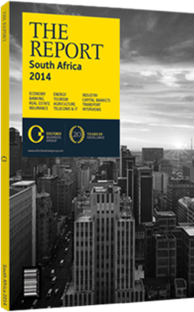OBG talks to Neal Froneman, CEO, Sibanye Gold

Interview: Neal Froneman
What factors are currently driving local and international demand for gold?
NEAL FRONEMAN: Supply and demand dynamics do not quite have a linear relationship with the price of gold. Gold is a tangible, financial asset that is considered a safe haven in many respects. As such, when the large economies of the world do well, the gold price generally goes down. When the US dollar or euro is strong, it normally finds its way in to the gold price. Right now we are seeing economic recovery and expectations of rising interest rates in the US, which is having a negative impact on the price of gold.
Nonetheless, demand certainly influences the gold price, such as during the Indian monsoon season, which can influence demand in that region, or a variable appetite from global powerhouses like China. In fact, in 2014 we have not seen the sort of demand from countries like China that we saw the previous year. The past year has seen gold prices drop about 27%. This puts pressure on mining houses to manage costs and cut capital, which can impact future production. A decline in global supply could put floor under the bullion price and possibly reverse its downward trend. In the interim, we may start seeing some mergers and acquisitions. In the long term I remain bullish on gold price.
How are mining companies managing and offsetting input-cost pressures?
FRONEMAN: As I mentioned earlier, the declining gold price puts pressure on mining houses to cut costs and/or reduce capital. In the South African context, a weakening rand offsets the decline in the dollar gold price and South African miners are less affected than international companies with large overheads. For South African-focused players like us, with 95% of our costs being rand-based, there is a natural hedge and thus less of an impact. However, it does eventually lead to inflationary pressures through its affect on things like fuel and electricity prices, as well as commodities that are external to South Africa, and therefore it invariably passes through in terms of wage increases. But in my view, currency fluctuation is used as an excuse for poor cost control. We have to work out these inflationary costs by improving productivity and efficiency.
What impact do labour unrest and wage settlements have on capital allocation decisions?
FRONEMAN: The biggest concerns for current players and investors in the South African mining sector are labour unrest, regulatory uncertainty and electricity supply. We have what is probably the most inefficient labour system in the world, which is structurally entrenched due to the fact that a labour union is part of the governing tripartite alliance. The number of man-hours lost in the South African mining industry is the highest in the world. There is a desperate need for an overhaul of some labour laws – even something as simple as secret ballots where workers can vote without intimidation. If labour unrest is not tackled it will remain a barrier to investment. The lack of regulatory certainty is also inhibiting long-term capital allocation as the goal posts seem to constantly move on policy. Regulation does not even have to be that attractive, but as long as there is certainty and stability over a long-term horizon, investors can plan accordingly.
South Africa’s mining sector enjoys relatively good infrastructure, but it is energy intensive, and rising electricity prices and a growing power deficit are concerning. As a result, mechanisation is increasingly looking more attractive. We are also seeing some multinational players start to divest and demerge, which is not necessarily a bad thing. Sibanye is the result of the unbundling of Gold Fields’ South African assets, and our local focus has allowed these assets to operate profitably and for much longer. However, despite an increased operational focus and lower overheads, new players will have to contend with the same issues that divesting firms faced. Thus, while it is not one company’s responsibility, players like ourselves must play a bigger role in enhancing the business environment.
You have reached the limit of premium articles you can view for free.
Choose from the options below to purchase print or digital editions of our Reports. You can also purchase a website subscription giving you unlimited access to all of our Reports online for 12 months.
If you have already purchased this Report or have a website subscription, please login to continue.

